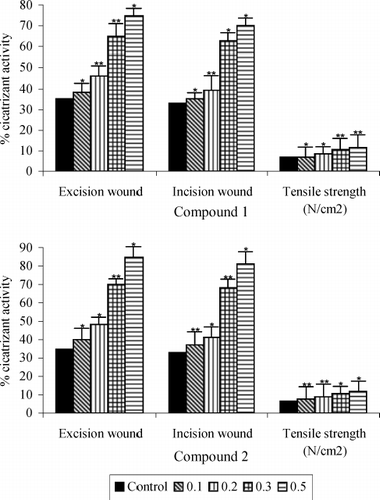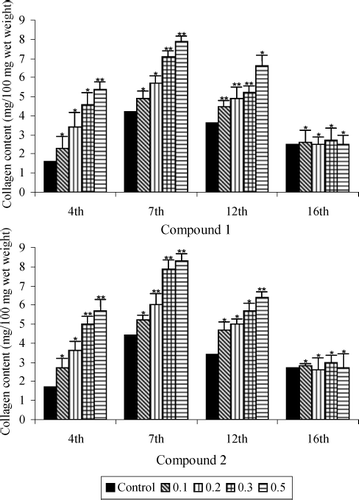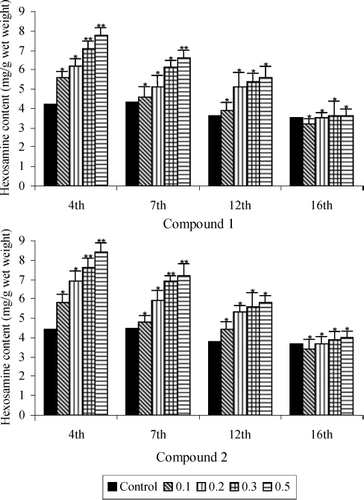Figures & data
Figure 1 Wound healing properties of compounds 1 and 2 and tensile strength of the wound in diabetic rats after 7 days. Values are mean + S.E. (n = 10 animals). *P < 0.05 and ** P < 0.01 as compared to vehicle (water) control. All wound area measurements were expressed as a percentage of the initial wound size.

Figure 2 Collagen content of saponins 1 and 2 treated and untreated wound granulation tissue from diabetic rats. Data are given as mean + S.E. for eight animals in each group. Statistically significant results are indicated as *P < 0.001 and **P < 0.01.

Figure 3 Hexosamine content of saponins 1 and 2 treated and untreated wound granulation tissue from diabetic rats. Data are given as mean + S.E. for eight animals in each group. Statistically significant results are indicated as *P < 0.001 and **P < 0.01.

Figure 4 Total protein content of saponins 1 and 2 treated and untreated wound granulation tissue from diabetic rats. Data are given as mean + S.E. for eight animals in each group. Statistically significant results are indicated as *P < 0.001 and **P < 0.01.

Figure 5 DNA content of saponins 1 and 2 treated and untreated wound granulation tissue from diabetic rats. Data are given as mean + S.E. for eight animals in each group. Statistically significant results are indicated as *P < 0.001 and **P < 0.01.

Table 1 Period of ephithelialization of saponins 1 and 2 treated wounds on diabetic rats.
